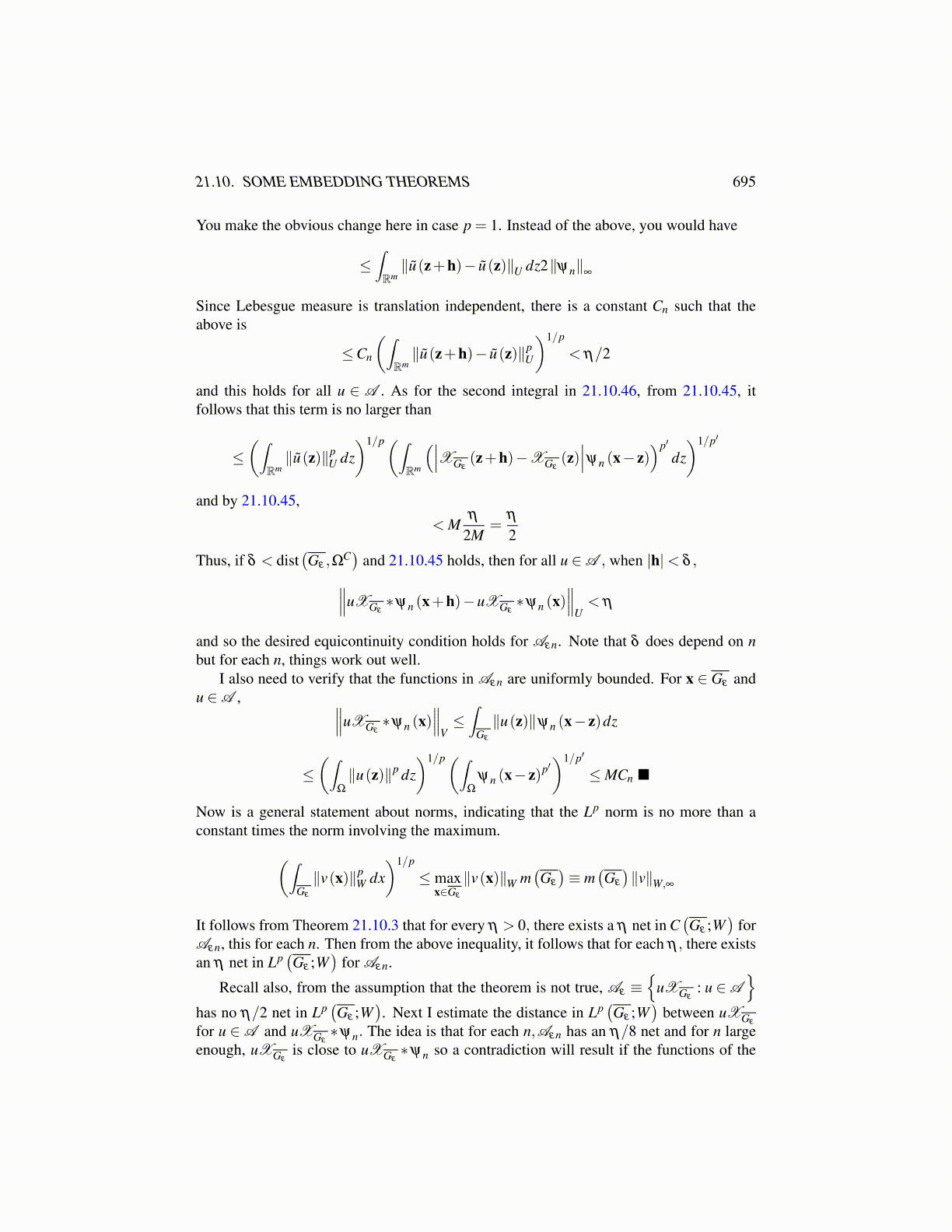
21.10. SOME EMBEDDING THEOREMS 695
You make the obvious change here in case p = 1. Instead of the above, you would have
≤∫Rm∥ũ(z+h)− ũ(z)∥U dz2∥ψn∥∞
Since Lebesgue measure is translation independent, there is a constant Cn such that theabove is
≤Cn
(∫Rm∥ũ(z+h)− ũ(z)∥p
U
)1/p
< η/2
and this holds for all u ∈ A . As for the second integral in 21.10.46, from 21.10.45, itfollows that this term is no larger than
≤(∫
Rm∥ũ(z)∥p
U dz)1/p(∫
Rm
(∣∣∣XGε(z+h)−XGε
(z)∣∣∣ψn (x− z)
)p′
dz)1/p′
and by 21.10.45,
< Mη
2M=
η
2
Thus, if δ < dist(Gε ,Ω
C)
and 21.10.45 holds, then for all u ∈A , when |h|< δ ,∥∥∥uXGε∗ψn (x+h)−uXGε
∗ψn (x)∥∥∥
U< η
and so the desired equicontinuity condition holds for Aεn. Note that δ does depend on nbut for each n, things work out well.
I also need to verify that the functions in Aεn are uniformly bounded. For x ∈ Gε andu ∈A , ∥∥∥uXGε
∗ψn (x)∥∥∥
V≤∫
Gε
∥u(z)∥ψn (x− z)dz
≤(∫
Ω
∥u(z)∥p dz)1/p(∫
Ω
ψn (x− z)p′)1/p′
≤MCn
Now is a general statement about norms, indicating that the Lp norm is no more than aconstant times the norm involving the maximum.(∫
Gε
∥v(x)∥pW dx
)1/p
≤ maxx∈Gε
∥v(x)∥W m(Gε
)≡ m
(Gε
)∥v∥W,∞
It follows from Theorem 21.10.3 that for every η > 0, there exists a η net in C(Gε ;W
)for
Aεn, this for each n. Then from the above inequality, it follows that for each η , there existsan η net in Lp
(Gε ;W
)for Aεn.
Recall also, from the assumption that the theorem is not true, Aε ≡{
uXGε: u ∈A
}has no η/2 net in Lp
(Gε ;W
). Next I estimate the distance in Lp
(Gε ;W
)between uXGε
for u ∈A and uXGε∗ψn. The idea is that for each n,Aεn has an η/8 net and for n large
enough, uXGεis close to uXGε
∗ψn so a contradiction will result if the functions of the